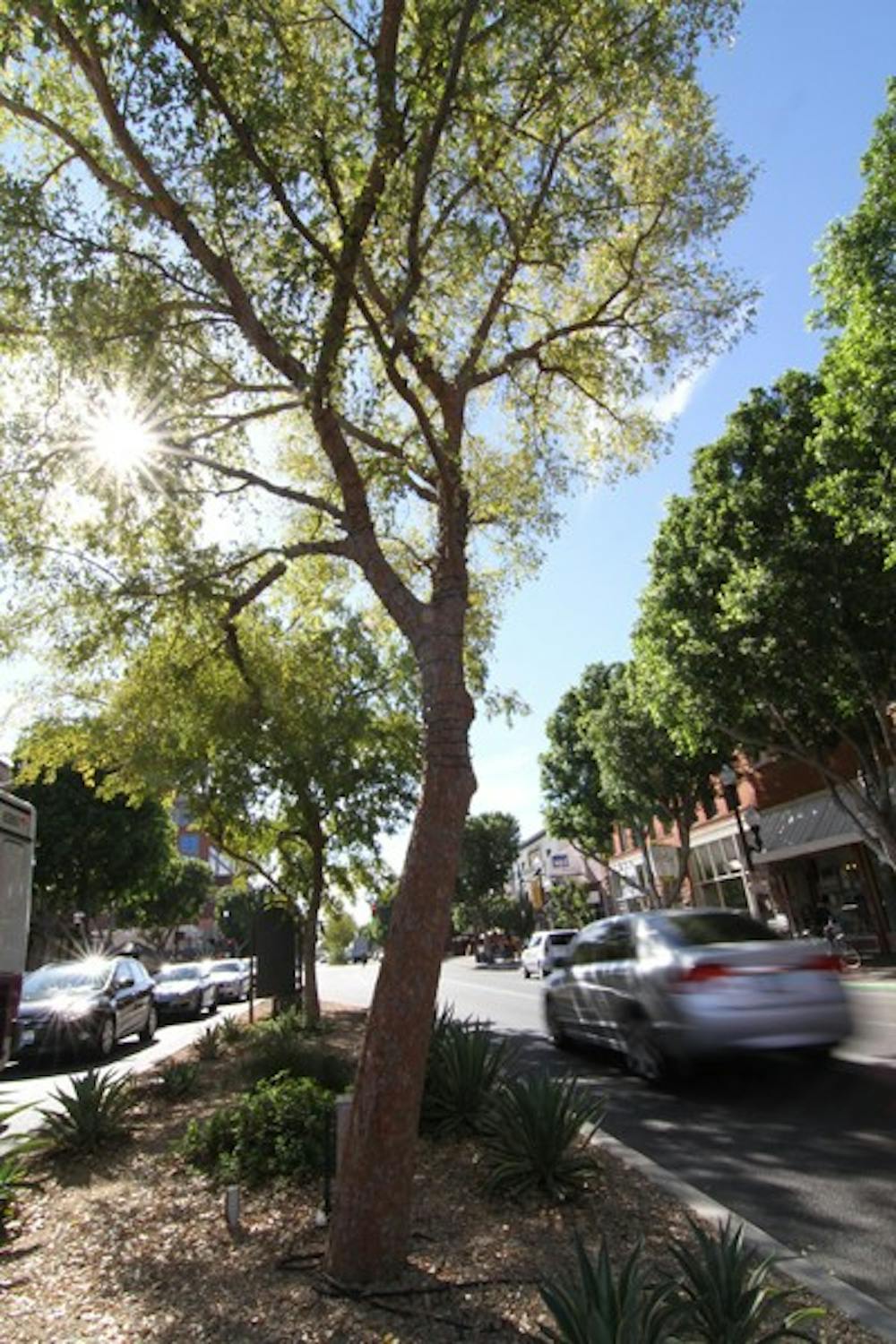The Tempe City Council decided in late October to continue using the ficus tree as the main tree on Mill Avenue after months of debate and discussion.
The decision came after an experiment to replace the ficus trees with Chinese pistache trees over the last few years backfired.
A November 2010 study by West Coast Arborists, Inc., found 49 of the 113 ficus trees on Mill Avenue have “defects that classified them as hazardous.”
The four hazard levels examined the degree of structural defects that may result in limb or tree failure in a certain period of time.
Councilwoman Shanna Ellis said residents are against the Chinese pistache trees, which take longer to develop a full canopy and lose their leaves during the winter.
Ellis said public meetings on a proposed streetcar for downtown Tempe often moved to discussion on the state of the trees and their smaller replacements.
“That really made me think that people love these ficus trees and let’s do whatever we can to ensure their safety and that they are healthy,” Ellis said.
There are 19 pistache trees on Mill to date, according to an Oct. 11 field operations document by the Tempe Public Works Department.
Ellis said the council decided to go with the ficus tree exclusively on Oct. 17.
“We want to continue having the ficus on Mill Avenue,” Ellis said. “On the side streets if they use other trees, that’s fine.”
Nancy Hormann, president and executive director of Downtown Tempe Community, said the 32 voting members of DTC voted unanimously to retain the ficus tree.
“We want the street to be viewed as a ‘leafy’ street (with) the lushness, the greenery and the canopy that are there,” Hormann said. “The only reason why we didn’t like the other trees that were being proposed is the fact that they lose their leaves in the winter.”
Hormann said the ficus tree has an intrinsic value as a symbol of downtown Tempe.
“We all feel that (the ficus trees) has become the brand of downtown,” Hormann said. “When you talk about Mill Avenue you think about the bridges, you think about the lake, you think about the mill and you think about the trees and we want to preserve that.”
Councilwoman Onnie Shekerjian said the next round of ficus trees will be pruned more carefully than their predecessors as the health of the trees is declining now because of improper pruning early in their lives.
“Part of the reason we decided to do that to go ahead and use the ficus trees is we now know how to trim them properly,” Shekerjian said. “They weren’t trimmed properly as they were growing up and that weakened them.”
Shekerjian said the Chinese pistache trees and the empty areas along Mill will be replaced by ficus trees.
Ellis said the next step might be to build an urban garden downtown to grow future ficus trees instead of purchasing an already adult tree.
As a lifetime resident of Tempe, Ellis said it was just as important to her to keep the ficus tree as it was to her constituents.
“I prefer the ficus. I was born and raised in Tempe, I’ve worked on Mill Avenue since 1985,” Ellis said. “I feel like … the character of downtown Tempe are the trees so I really wanted to keep them.”
Reach the reporter at brennan.j.smith@asu.edu
Click here to subscribe to the daily State Press newsletter.





